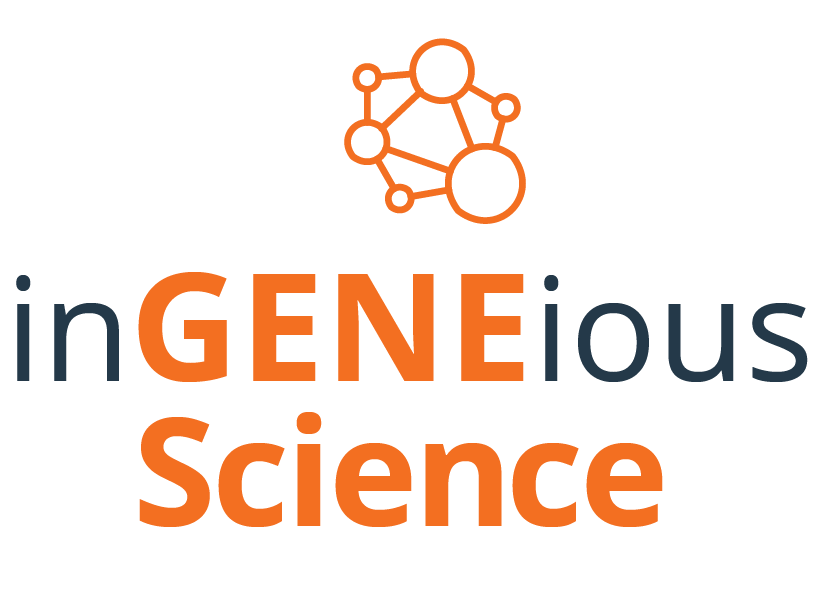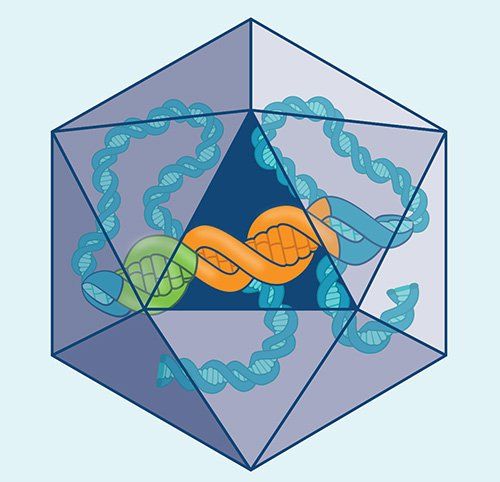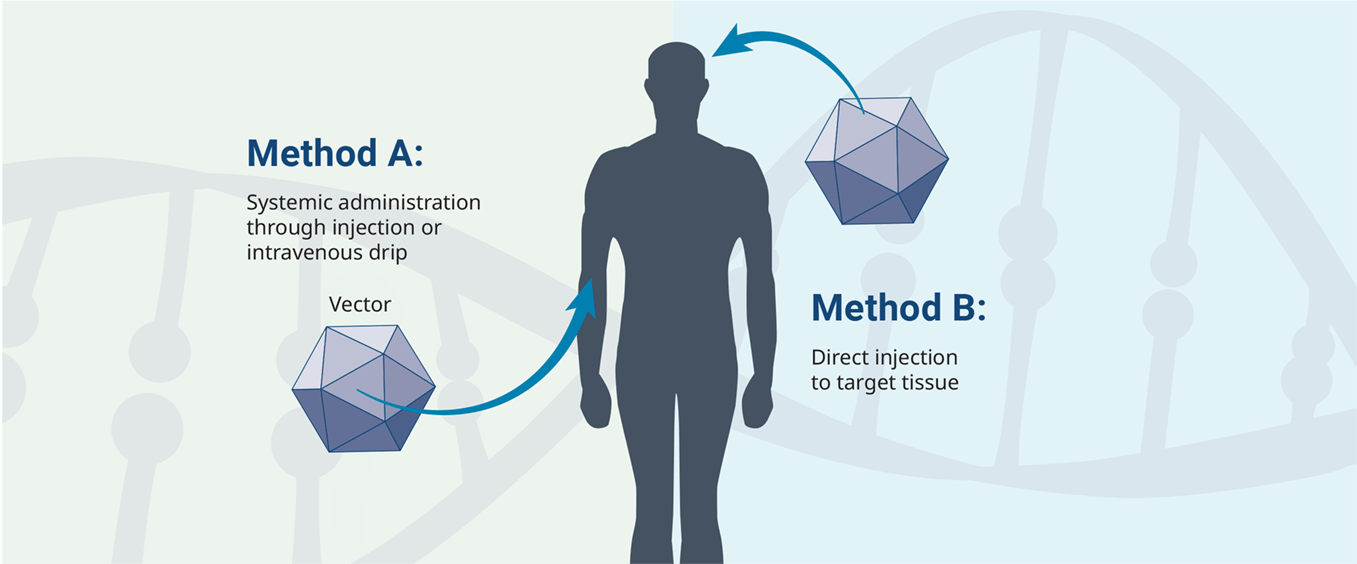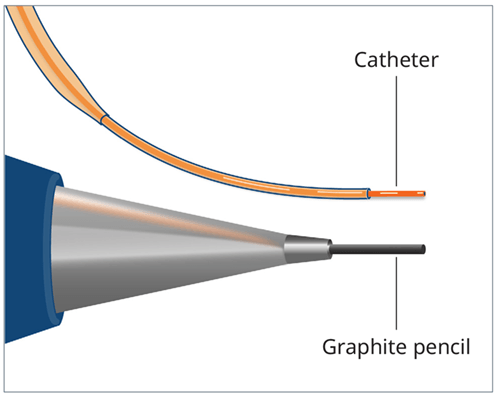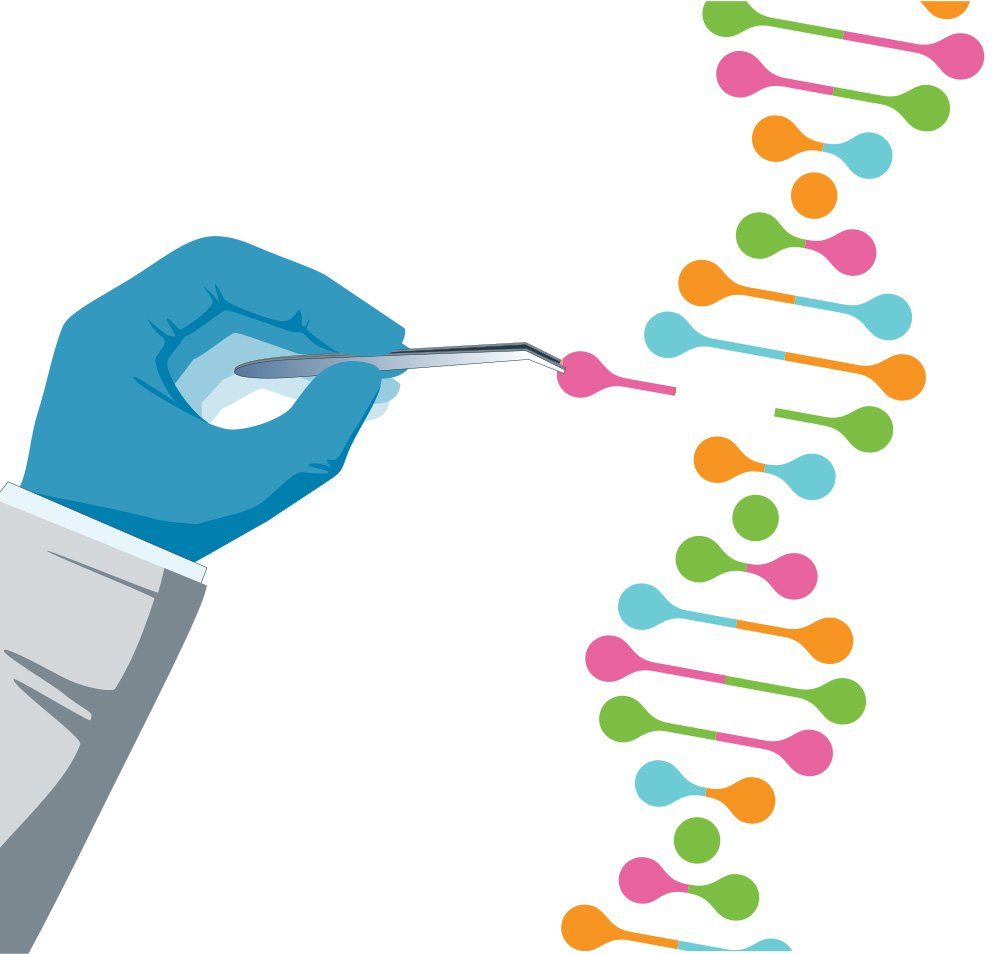Basic principles of genetics
What is gene therapy?
What is gene therapy?
Gene therapy is an experimental method that uses genes to treat or prevent disease. There are different types of gene therapy.38
Some basic strategies are listed below.
What is gene knockdown?
Gene knockdown is a technique used in gene therapy strategies to reduce or block the expression of a mutant gene.39
What is gene augmentation?
Gene augmentation is a strategy that introduces a working copy of a gene into cells to correct for missing function. Introducing a functional copy of the gene into the cell could restore the presence and natural function of the protein.39
Examples of gene therapy in clinical research include those for
Are there different ways to administer in vivo gene therapy?
Broadly, there are two routes of administration to consider when designing a gene therapy application: intravenous and direct injection into the target tissue.
How is gene therapy administered into the brain?
During a single surgery, a small catheter is used to administer investigational gene therapies directly into target tissue.39 The size of the catheter may be more easily understood when it is compared to something more familiar. The catheter used to administer experimental gene therapies is a very thin catheter (~1/32”), or about the same thickness of the graphite in a mechanical pencil.
Are there other types of genetic engineering?
With advances in science and technology, other types of genetic engineering, such as gene editing techniques, are now being studied.
Gene editing is a method that lets scientists delete, insert, or modify specific DNA sequences in the genome of many organisms, including animals, plants, and bacteria.41
Scientists are working to find ways to develop therapies that use gene editing to potentially treat children or adults with genetic diseases, such as fragile X syndrome, spinocerebellar ataxia, and Huntington’s disease.
What are some different types of gene editing?
CRISPR
Clustered
Regularly
Interspaced
Short
Palindromic
Repeats is a technology that can be used to edit genes. The concept of CRISPR is simple: it’s a way of locating a specific piece of DNA inside of a cell for alteration. This technology enables scientists to manipulate a specific gene of interest. For example, scientists may knockout a gene by targeting and inactivating a gene or knock-in a sequence of a gene by integrating a foreign genetic sequence into a cell’s genome.41
ZFNs
Zinc-Finger Nucleases are engineered, DNA-binding proteins that facilitate gene editing by creating a double-stranded break in DNA at specific locations. ZFNs have a high degree of specificity to target particular base pair sequences.41
TALENs
Transcription Activator-Like Effector Nucleases are a set of engineered nucleases that can be used for gene editing. Similar to ZFNs, TALENs are a two-component system with a DNA-binding domain and a DNA-cleavage domain, enabling editing of DNA at specific locations.41
Is cell therapy the same as gene therapy?
Cell therapy and gene therapy are not the same but are overlapping fields of biomedical research. Cell therapy is the transfer of modified cells into a patient, whereas gene therapy is the transfer of genes or genetic material into a patient. CAR T-cell therapy, or chimeric antigen receptor T-cell therapy, is an example of cell therapy. Learn more about CAR T-cell therapy below.
CAR T-cell therapy
CAR T-cell therapy is a cancer immunotherapy that involves the use of programmed targeted tumor-associated antigens. A patient’s T cells are removed from the body and changed in a lab. Scientists then deliver genetically modified cells back into the body. These modified cells are able to recognize and target cancer cells.42 CAR T-cell therapy has been approved for use for certain types of lymphomas.

